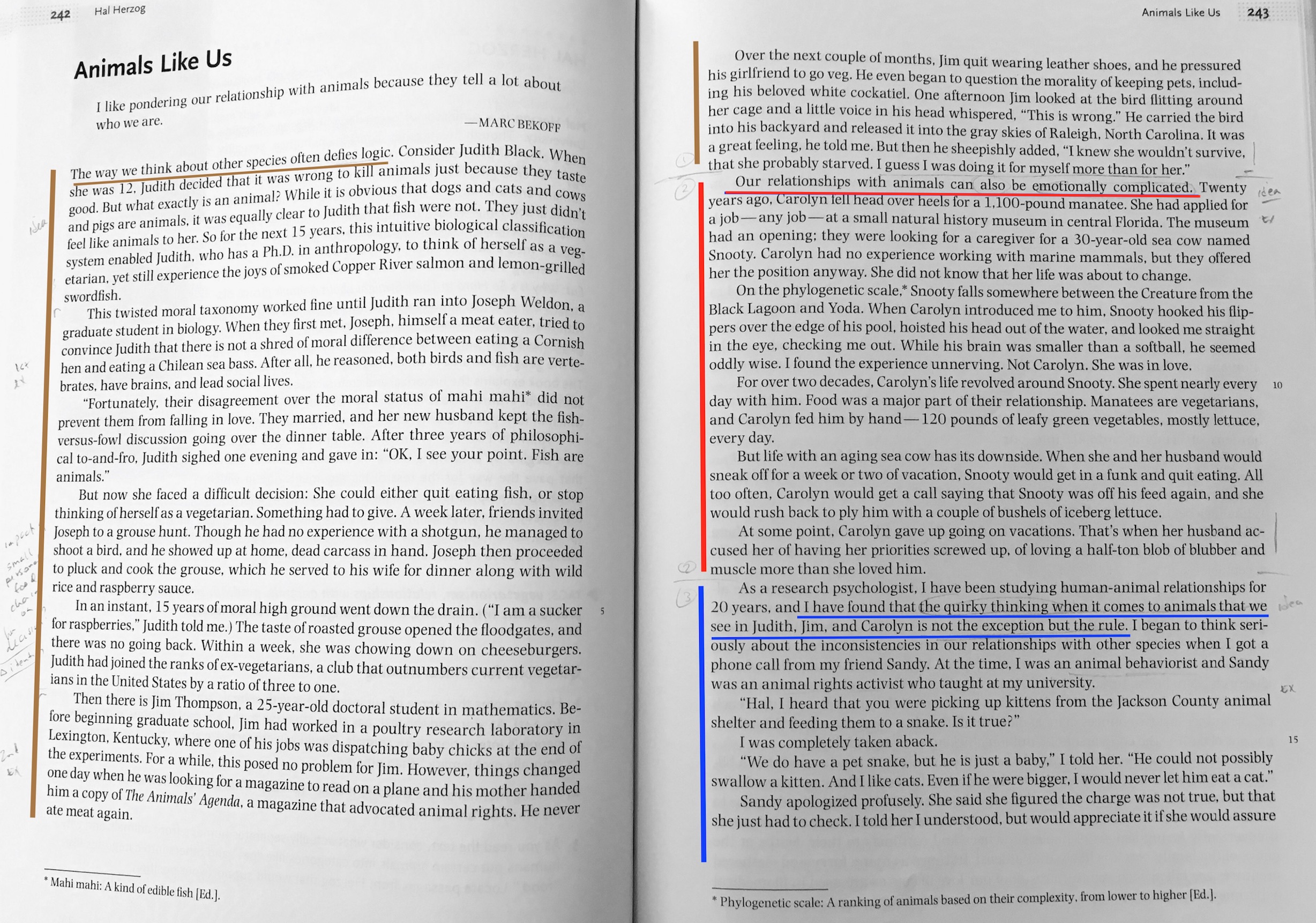This article has been updated and expanded – click here for the updated article.
Unless they’re very short, most pieces of writing are built from separate chunks. In short pieces of writing, paragraphs are the chunk unit. But in longer pieces, multi-paragraph sequences form distinct segments, which combined make up a complex text.
Some emerging academic readers struggle with reading complex texts because they’re used to looking for a single main idea. But most complex texts will weave together multiple ideas. If you look for one main idea and expect every bit of the rest of a complex text to tie directly to that main idea, you’re likely to overlook other equally important ideas or misunderstand what you’re reading.
Chunking is a strategy that encourages readers first to look for the distinctive segments in a complex text, second, to identify the key ideas and purpose of the segment, and then to analyze the relationship between chunks. By first working with smaller chunks of text and then seeing how they work together to create a larger more complex meaning, readers can better understand and “write back” to the texts they read.
So, how can readers distinguish one chunk of a text from the next? The key to finding the seams of a text is to look for moments of transition. Sometimes, as in course textbooks, those moments of transition are marked for readers by way of subheadings. Other times, writers will simple leave a blank line between segments. Still other times, writers will explicitly signal their transition with words, such as “Now I’d like to turn to another part of the problem….”
But more often, readers have to look for and find shifts in a writer’s topic or subtopic, ideas, questions, or purpose. In the photo (click it to enlarge), I have chunked the first two pages of Hal Herzog’s “Animals Like Us.” The first chunk, marked by the brown line, is 7
paragraphs long. Every paragraph in that sequence is dedicated to elaborating on the first sentence of the first paragraph (underlined in brown): “The way we think about other species often defies logic.”
The second chunk is marked in red is 5 paragraphs long. Each paragraph elaborates on the idea that “Our relationships with animals can be emotionally complicated.”
The third chunk, in blue, continues onto the next page.
Once readers get into the habit of noticing the seams of a piece of writing, its easy to find and identify chunks. After that, the job is a matter of identifying the purpose and key ideas of the chunk and determining how all the chunks fit together to create a larger meaning.
![SASC - Student Academic Success Center - UNE [logo]](https://s3.amazonaws.com/files.uneportfolio.org/wp-content/uploads/sites/5/2022/02/SASCLogoSquare_Smaller-3-e1644936452801.jpeg)
